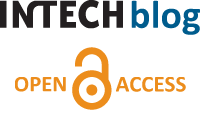Massachusetts Institute of Technology (MIT) has defined its mission as the one which will “best serve the nation and the world in 21st century”. That the institute has made its scholarly articles openly accessible is not exactly news but it is valuable to rinse and repeat the process. The determination of MIT to shift from the old tradition of publishing model to a new publishing paradigm which relies on internet technology may be the clue to becoming ranked third among world’s top 200 universities. As documented in Times Higher Education database, in 150 years, MIT has produced 73 Nobel laureates, eight of whom are members of its current 1,025-strong faculty. From its 168-acre Charles River campus, 10,300 students are instructed by a total teaching staff of 1,704 in architecture and planning, engineering, humanities, arts and social sciences, management, science, and health sciences and technology.
Education Should Imply Creation
One of MIT’s commitment is marrying education with the creation of knowledge. Recent creations at MIT are:
• a new type of matter—a gas of atoms that shows high-temperature fluidity
• development of a semi-conductor polymer that can detect the presence of TNT vapor even at the concentration of parts per billion
• development of a process that will eliminate all liquid from solid-state batteries, doubling or tripling their capacity
• harnessing the construction talents of tiny viruses to build “nanowire” structures for use in very thin lithium-ion batteries, with a goal of building a battery the size of a grain of rice
These discoveries are not due to the MIT’s possession of some sort of alchemical laboratory but are self-actuated results springing from campus libraries. The MIT Libraries hold more than 2.9 million print volumes and 3.1 million additional items. In addition, the libraries also manage DSpace@MIT, a digital repository that captures, preserves, and shares MIT’s intellectual output with the world. DSpace@MIT currently contains nearly 30,000 items, including MIT theses and the digital works of 50 communities representing groups of MIT faculty and researchers, labs, and centers. Dspace is an open-source software platform free for anyone to read, share and download. Dspace was voted for anonymously at MIT.
“The vote is a signal to the world that we speak in a unified voice;
that what we value is the free flow of ideas,” said Bish Sinyal
Unlocking the MIT Lectures
Dspace was launched in 2002, prior to which MIT has launched MIT OpenCourseWare which makes teaching materials used in MIT undergraduate and graduate courses available on the web, free of charge, to any user anywhere in the world. It is not a degree-granting or credit-bearing initiative, but a large-scale, web-based publication of MIT course materials. Educators are encouraged to use materials for curriculum development, and self-learners may draw on materials for self-study or supplementary use, including learning resources specially developed for high school students.
Who Should be Controlling the Scholarly Record?
Individual faculty authors may choose to make contracts with a small number of large publishers who dominate the market and continue to increase subscription rates to scholarly journals, or they may opt for dissemination of knowledge and give their university a deciding role in how publications happen. Abelson from MIT reports: “Universities have a mission that has something to do with producing and disseminating knowledge. These publishers, whatever their good intentions may be, have a mission to make money for their stockholders.” The global pool of knowledge is becoming larger and stacked with information, and what should raise awareness to Open Access is the question, who do we depend on for maintenance, publishers or academics?











Pingback: MIT Makes All Faculty Publications Open Access | InTechWeb Blog University Intro
Pingback: DuraSpace Blog » Blog Archive » MIT’s OA Policy Related to #3 Ranking Among Top 200 Universities?
TRADITIONAL PUBLICATION: NONTRADITIONAL ACCESS PROVISION
Huge congratulations to MIT!
But a slight correction:
What MIT has done is to mandate that the author’s final draft of all MIT articles published in peer-reviewed journals should be self-archived in MIT’s Open Access Institutional Repository. It is indeed very likely true that the “determination of MIT to shift from the old tradition … may be the clue to becoming ranked third among world’s top 200 universities.” The enhanced uptake, usage and impact resulting from this enhanced access is the factor that has helped enhance other universities’ rankings too (e.g., those of U. Southampton, the first to mandate OA self-archiving).
But the shift that has occurred at MIT and Southampton to enhance their impact rankings is definitely not a “shift from the old tradition of publishing model to a new publishing paradigm which relies on internet technology”! MIT and Southampton authors continue to publish exactly as they have done all along — in the best peer-reviewed journals whose quality standards their authors’ research can meet. And just about all journals today “rely on internet technology.”
No, the shift is that of supplementing the old tradition of publishing in an established peer-reviewed journal with the new tradition of self-archiving the author’s final, accepted draft, so that all researchers can access, use, apply and cite their findings in further research, and not just those whose institutions can afford to subscribe to the (traditional) journals in which they happen to have been published.
Credit where credit is due!
Dear Mr Harnad,
Thank you for your thoughtful correction, I have actually meant the same but have expressed vaguely perhaps in defining open access methods (whether green or gold) as those which simply rely on internet technology. Glad to have you as a reader (since I like to read your work).
Pingback: Mudanças no ciclo da comunicação científica | Blog do Kuramoto